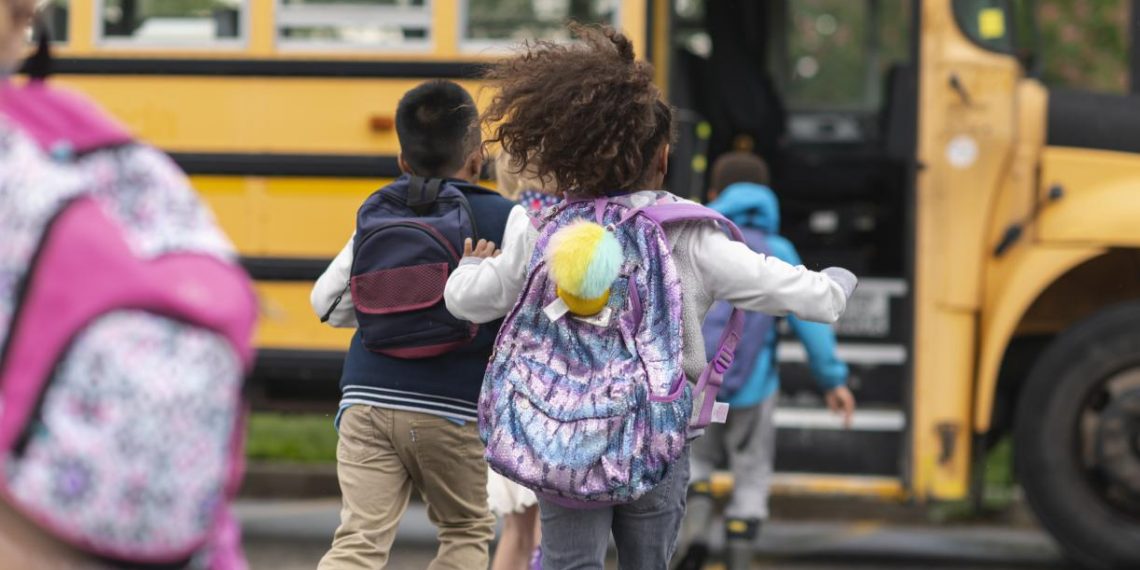Thanks in part to WRI research and partnerships, the U.S. Infrastructure Investments and Jobs Act includes more than $20 billion for carbon removal and electric school buses.
The Challenge
The United States must take action throughout the economy to hit its target of cutting emissions 50-52% below 2005 levels by 2030. Two areas that historically haven’t received enough attention are carbon removal and electric school buses.
Research shows that preventing the worst effects of climate change requires deep emissions reductions and a major expansion of carbon removal — both through natural approaches, like reforestation, and technological methods, like direct air capture. WRI analysis finds that scaling up carbon removal in the United States requires significant federal investment beginning this decade.
More than 20 million students in the U.S. ride a bus to school each day, and more than 90% of these buses are diesel-powered. Diesel school buses are not only greenhouse gas emitters, they also expose children to dangerous air pollution and diesel exhaust, a known carcinogen.
WRI’s Role
WRI conducted research and organized partnerships to draw attention to these important issues.
WRI published a comprehensive review of the most impactful pathways for U.S. federal policy to accelerate carbon removal, which highlighted the significant promise of tree restoration and direct air capture. Building on that analysis, WRI worked closely with other organizations and private sector leaders to identify policy proposals to support carbon removal, including through climate spending in the U.S. Infrastructure Investment and Jobs Act.
Meanwhile, WRI’s Electric School Bus Initiative was one of the first to articulate the goal of electrifying the entire U.S. school bus fleet, calling for significant federal investment in electric school buses. In addition to meeting with staff from more than 50 congressional offices and committees, the initiative collaborated with partners on development and promotion of the 2021 Clean Commute for Kids Act, which established the markers for ambitious electric school bus policy and shifted target funding from millions to billions of dollars.
The Outcome
The Infrastructure Investments and Jobs Act (also called the Bipartisan Infrastructure Law), enacted in November 2021, is the first U.S. infrastructure law to include significant spending to address climate change. The law contains more than $17 billion for natural and technological carbon dioxide removal and $5 billion to replace existing school buses with cleaner and electric buses.
U.S. investment and policy prioritization of carbon removal in the new law will have far-reaching effects in catalyzing industries, technologies and practices needed to prevent the worst effects of climate change. Carbon removal can create jobs across communities, including those facing economic hardship or negatively affected by the clean energy transition.
Meanwhile, the unprecedented federal investment in electric school buses will help energize the market and advance WRI’s goal of nation-wide school bus fleet electrification by 2030. It will also improve the health of millions of children who ride buses to school every day and create cleaner air for communities throughout the nation.



